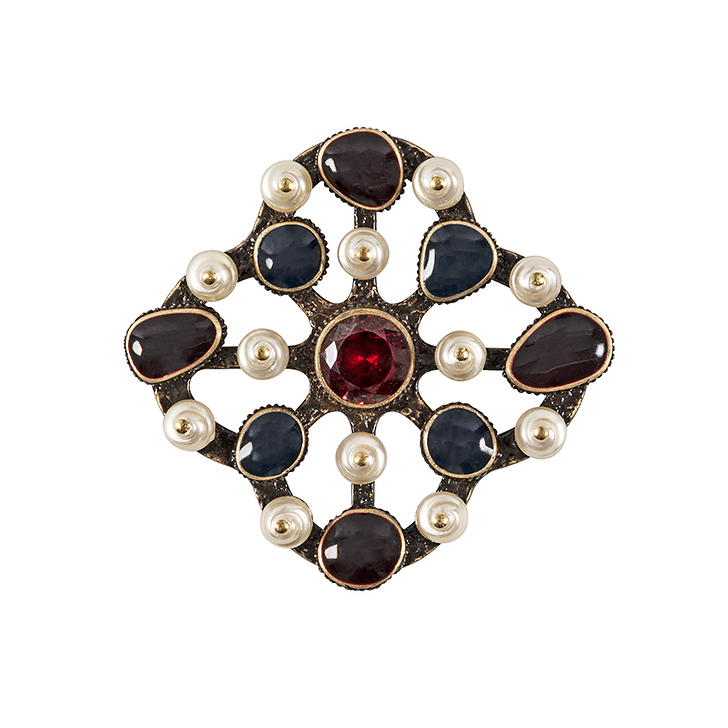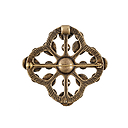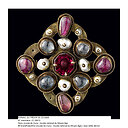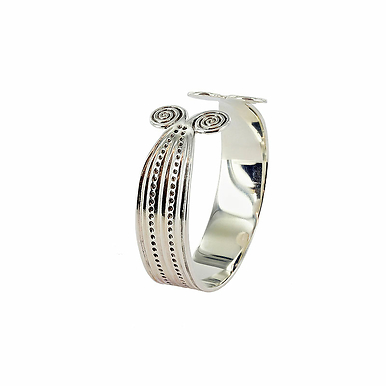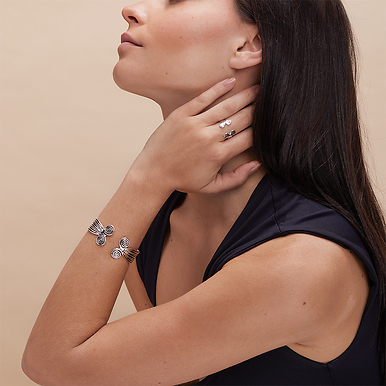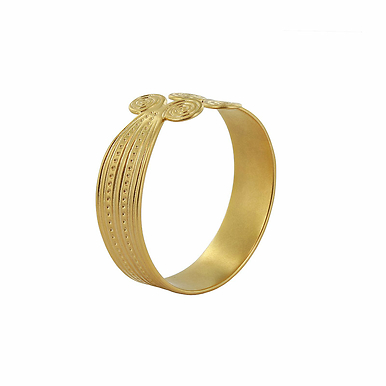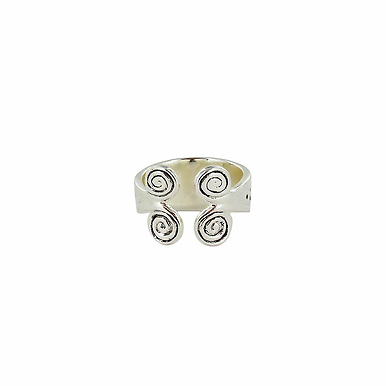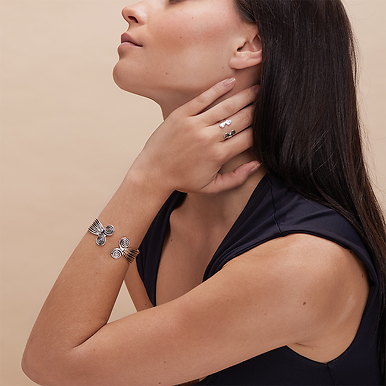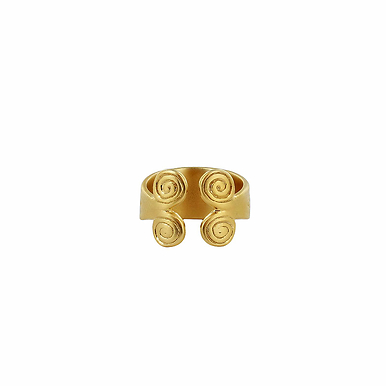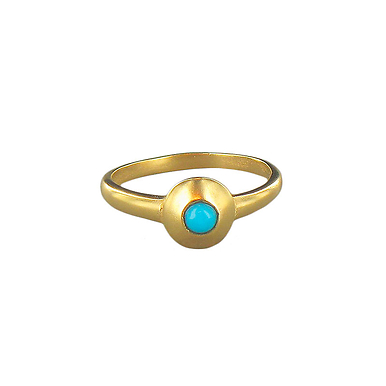Colmar Treasure Brooch
BF400400
This object is an example of the type of clasp frequently listed in inventories. They are distinguished by a decoration composed exclusively of pearl and precious stones, in a geometric setting.
In the form of rose, or more precisely "four half compasses", he clap from the Colmar Treasury is almost...
Read more
This object is an example of the type of clasp frequently listed in inventories. They are distinguished by a decoration composed exclusively of pearl and precious stones, in a geometric setting.
In the form of rose, or more precisely "four half compasses", he clap from the Colmar Treasury is almost entirely covered in stones which conceal the open-work setting. The settings for the precious stones are formed of two distinctive parts : a shallow, slightly pyramidal cupule, with an edge that has regular grooves, and a slender sheet surrounding the gem in a concave strip, fixed to the cupule with a rivet. These metal strips are often found on jewellery dating back to the first half of the 14th century, as well as on larger religious gold and silver pieces.
The date of such works can be identified quite accurately. The style of those with a decor of figures is from the second quarter of the 14th century.
In addition, the fact that the Colmar treasure was buried probably points to the persecution of Jews which broke out in 1348-1349, in addition, the most recent coin found with this treasure is a florin from the reign of Louis the First of Hungary which was struck in Buda between 1342 and 1353.
The jewels associated with these coins therefore date to before the middle of the century.
Close
Login to see prices
Sold by GrandPalaisRmn

